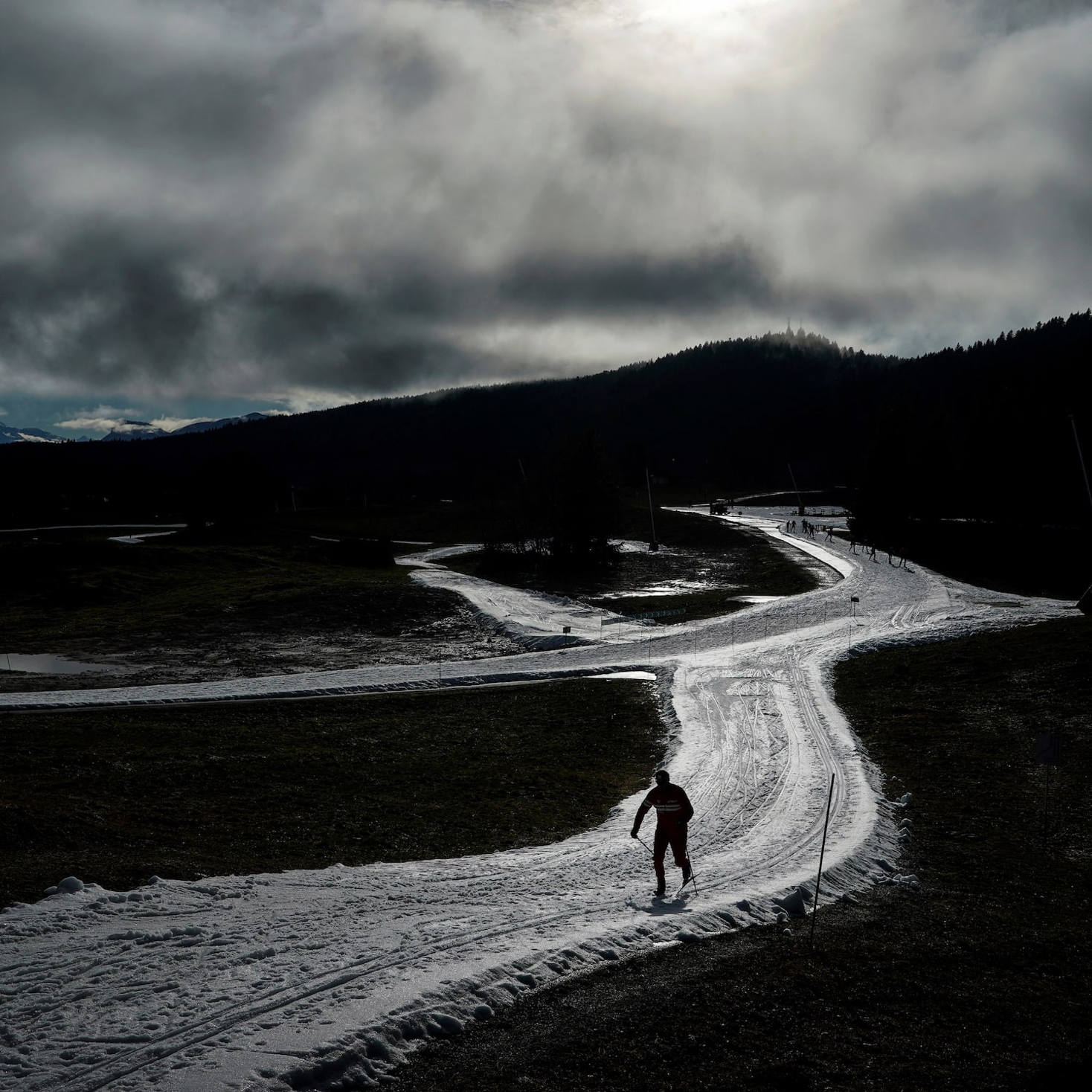There are no clear signs that the pattern will support a near-term change to colder weather and more snow
BY IAN LIVINGSTON
Following a spike in Northern Hemisphere snow cover in November, many long-range forecasters sounded the alarm that it could foreshadow a cold and snow-filled winter. But pulses of record warmth in North America and Europe have thwarted snow accumulation and, in some cases, depleted what’s on the ground.
Now, Northern Hemisphere snow cover is near historical lows for midwinter.
The lack of snow has forced some ski resorts in Europe to close, while many areas in the Northeast and Mid-Atlantic United States have far less terrain open than they typically do at this time of year.
Snow cover isn’t down everywhere. California and the intermountain West are having one of their best snow seasons in memory because of a parade of storms from the Pacific Ocean. But, overall, the snow situation is more famine than feast.
What the data shows
Data from various snow cover trackers have highlighted the rapid decline in Northern Hemisphere snow in recent weeks following a mid-December peak.
A multi-sensor system that has tracked snow cover for nearly two decades shows current levels at a record low:
A separate weekly snow cover analysis from the National Oceanic and Atmospheric Administration and Rutgers University — with 57 years of data — also shows a sharp decline in the past several weeks. Early in the winter, levels were well above the long-term average but have dropped well below:
Much of the recent dip is because of recent melting in Europe from the record-breaking warm spell to start 2023.
The Northeast United States has also lost much of the snow during a similar spell of record warmth earlier this week. As one example, the snow depth in Buffalo fell from 28 inches on Dec. 27 to zero inches on Wednesday.
Normal swings in weather take a big toll in a warming world
Some of these snow cover swings are a normal part of winter, but climate change is making them more significant.
“Snow cover is pretty volatile … and large swings occur all the time,” Judah Cohen, visiting scientist at the Massachusetts Institute of Technology and forecaster with Atmospheric and Environmental Research, wrote in a text message to The Washington Post.
But a warming climate makes it harder for places that are losing snow because of natural swings in the weather to bounce back from such thaws, Cohen said.
That’s the case in parts of the French Alps. Take the small ski resort of Le Praz de Lys-Sommand. It’s a lower-elevation resort where temperatures are frequently only marginally cold enough for snow. Warm spells like the present are devastating.
Christine Harrison, a vacationer to Le Praz de Lys-Sommand for the past 25 years, told PRX’s “The World” she’s never seen it like this. “You can’t ski. Literally there is no snow,” she said. “There’s just grass.”
The managing director for the national body representing ski resorts in France said half of the 7,500 ski slopes in the country were closed, according to CNN.
The most popular and interesting stories of the day to keep you in the know. In your inbox, every day.
At the moment, it’s a similar story across large portions of Europe. Mountainous countries like Austria and Switzerland have been among those seeing record warmth and not enough snow. While the highest elevation resorts still have snow, and in some cases a good deal, people residing in areas that rely on winter tourism are concerned, as are those watching for snowmelt to keep rivers like the Rhine in Germany and Po in Italy running during spring and summer.
Not doom and gloom everywhere
The situation is dire in places, but it is not doom and gloom across the entire hemisphere.
The western half of the United States has seen round after round of stormy conditions that have delivered an abundance of mountain snow. Following a survey early this week, California officials stated that the “snowpack is actually off to one of its best starts in the past 40 years.”
Snow water equivalents — a measure of the water contained in the snowpack — were as high as 203 percent of normal in the southern Sierra Nevada.
Snow cover is also quite healthy in the Rockies and surrounding ranges. Other than parts of southern New Mexico, snow water equivalents are above average across the entire Intermountain West.
Steamboat Springs in Colorado has seen more than 200 inches of snow and just had its snowiest December in a decade. Western cities such as Reno, Nev., and Flagstaff, Ariz., are also running a surplus.
Swaths of the central United States, including the northern Plains and Great Lakes region, have also had a banner winter for snowfall because of multiple blizzards.
Behind the lack of snow: Missing cold air
Snow, of course, requires cold air. Outside of a few brief outbreaks of Arctic air, the cold has been seriously lacking.
Forecasters attribute the absence of sustained cold to the polar vortex, which has been very stable. For cold air outbreaks in the mid-latitudes of the Northern Hemisphere, the vortex needs to be disturbed and weakened.
Looking ahead, a phenomenon that could destabilize the vortex is known as a sudden stratospheric warming event. It can lead to disruption and weakening of the vortex, allowing cold air that resides near the North Pole to shift southward.
Without a sudden stratospheric warming event, Cohen said, this will be a “pretty forgettable winter” in the eastern United States.
Once in a while, however, cold can manage to escape the Arctic even without such an event. This was the case with the recent Arctic outbreak that blasted much of the contiguous United States in the lead-up to Christmas. It brought some of the coldest December weather in decades and was not in response to sudden stratospheric warming (SSW).
“It is always worth remembering a month like December 2010 in the UK (coldest since records began in 1884) and a winter like 2013-14 in the U.S. occurred in the absence of SSWs,” Simon Lee, an atmospheric scientist at Columbia University, wrote in a text message.
Lee pointed out that, while data is limited, it appears that these events are more common in El Niño compared with La Niña. This winter’s La Niña may then mean odds for such an event are lower than normal.
Lee says signals for a sudden stratospheric warming are still too distant to have much confidence in any forecast. Some computer models hint that the polar vortex could weaken a bit by February, allowing more cold air to spill south.
But for now, Lee said, no sudden stratospheric warming event “is expected yet in a reliable time frame.”
Ian Livingston is a forecaster/photographer and information lead for the Capital Weather Gang. By day, Ian is a defense and national security researcher at a D.C. think tank.




